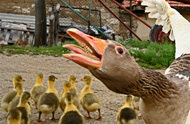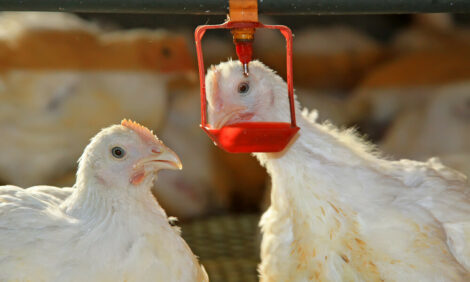



Zoonosis - Know The Rules
EU - The approaching zoonosis legislation has become one of the biggest talking-points in the industry at the moment. It is important for producers to understand exactly what is required of them, and in order to understand why they are being asked to take these steps it may help to look back at the context against which the new rules are being brought in.
The origins of the impending legislation can be traced back to previous food scares. These led the EU to introduce, in 2003, a zoonosis directive aimed at stepping up monitoring procedures in all EU member states, and also a zoonosis Regulation setting out control and a timetable for bringing it in (Council Regulation 2160/2003). Both are applicable to farming in general, covering not only laying birds, but other poultry, pigs, etc.
The next stage was for member states to carry out sampling to establish the actual level of infection on layer flock holdings. In the UK, Salmonella infection on layer farm holdings was found to be very low, at 8%; most of this was S.Enteriditis, with S.Typhimurium accounting for less than 3%. In fact the UK had the lowest level of infection of the EU's six largest egg producing countries. However, the levels reported by certain member states were sufficiently high to alarm the European Commission to the extent that they felt the original timescale for bringing in the new legislation should be accelerated.
The original intention of the regulation had been to exclude eggs from Salmonella positive flocks from the normal retail channels from 1st January 2010. The European Commission's concern over the levels of infection in some countries caused them to propose bringing the ban forward by two years, to 1st January 2008. Following pressure by BEIC and EUWEP, working with DEFRA, FSA and colleagues in some other member states, the Commission subsequently proposed to move the date back to 1st January 2009, which was accepted by the member states in May 2007.
In the wake of the survey, the Commission also set targets for the reduction of the level of infection over the next three years. Each member state was charged with devising its own plan of action and demonstrating how these targets would be met. DEFRA, and it counterpart organisation in the other states, each duly submitted their draft National Control Programme (NCP) for Layers, and following lengthy debate the consultation process is now almost complete.
Under the NCP all producers, even the small-scale ones, will be required to take environmental samples once every 15 weeks. These samples, which take the form of 'boot swabs', must be sent for laboratory testing. In addition, holdings with over 1,000 birds will have to provide an 'official' sample once a year, to include dust as well as the 'boot swabs'. The taking of this sample will be supervised by an independent control body or Animal Health; BEIC is currently negotiating with DEFRA to ensure that a monopoly situation does not arise and the cost to the producer will not be excessive.
From 1st February 2008, if a positive Salmonella result is found in the testing laboratory, the sample will be forwarded to the Veterinary Laboratories Agency for serotyping. This is the same situation as applies today. If it is shown to be S.e or S.t, the producer will be contacted by DEFRA and given advice, at no cost to himself. Until 1st January 2009, a positive sample will not make the producer subject to any controls on egg movements from that flock. After that date, however, more stringent regulations will apply. Under these regulations, if a positive S.e or S.t is found, the next stage will be to confirm the infection by taking a repeat sample, as it is vital to rule out the possibility of cross-contamination. If this also tests positive, restrictions will then be put on egg movement from that flock to ensure that eggs are heat treated and none of them enter the retail channels. The producer will then have various options open to him. If the flock is almost due for depletion, he may choose to destroy it and clean out the building. Alternatively he can opt for a third test to establish infection, and this can take one of three forms. It can be another environmental sample. It can be laboratory analysis of bird carcases (caeca and oviduct). Or it can be laboratory testing of 4,000 eggs. Even when Salmonella is present in the flock, this does not mean it is necessarily present in the eggs. Mark Williams, of BEIC is pleased that the Council managed to persuade DEFRA and the Commission to accept egg testing as a final test to establish infection. "It makes sense, because this legislation is aimed at improving food safety. Consumers do not eat the environment, but eggs. We know from government surveys that egg contamination is very low, and if flocks are properly vaccinated, and the producer operates excellent standards of cleaning and disinfection, with proper rodent control, the risk to flocks is minimised," he says. "Although providing 4,000 eggs for testing will be expensive for the producer, I feel many producers may wish to take this option as producers will rightly not accept potentially losing their flocks (and possibly business) based on an environmental sample." If the third test is negative, restrictions on egg movement will be lifted.
Although the system for dealing with positives will not become fully operational until 1st January 2009, producers will have to start taking regular samples from 1st February 2008, so it is vital for them to start planning now. Over the last few months the BEIC has run a series of 10 roadshows around the country to help producers understand the testing procedures that they will have to follow, and the implications of a positive result. "As the dates get closer, producers have now started to recognise how serious it is," Mark commented. "Producers are suddenly realising they only have one turnround left to take action, should any problem be identified".
On 13th August 2007, BEIC amended the Lion Code of Practice to introduce the new testing regime in order to prepare the industry for the new legislation. The message Mark would like to impress on producers is that between now and 1st January 2009, this is still 'peace time'. "This is the time when producers should be talking to their vets and looking carefully at their farms," he explained "If you find a positive now, you still have time to act before the punitive measures enter into force from 2009. If you are negative now, you can make sure you stay negative. Start testing now, so that by February next year you will be familiar with the sampling regime, you will have uncovered and dealt with any problem areas, and the chances of getting a positive will be much reduced."
Further Reading
|
|
- Find out more on poultry diseases by clicking here. |











